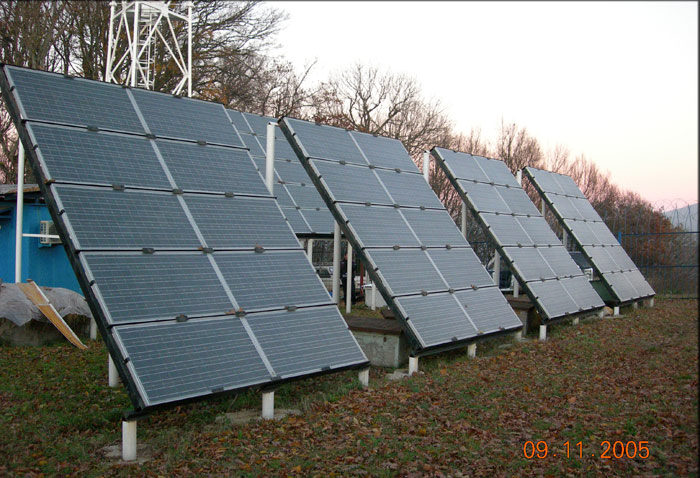Solar powered base station

The idea of using solar panels and other sources of natural power for base stations is very attractive. No need to think about food, do not have to go to the place, you can put the station even in the mountains, even on platforms in the ocean. It sounds cool, but so far there are few such stations.
In August 2004, in order to provide coverage of the Beeline network on the busy part of the Krasnodar-Sochi federal highway passing through Moldavanovka, the first base station powered by solar energy, wind turbines and diesel was broadcast. The new base station was the first such project in Russia and in Europe.
')
The mountain pass in the area of Moldavanovka is a rather complicated area to ensure high-quality coverage. The first stage was the analyst on the possible installation site of the station. After calculations, one of the proposed positions for the base station was a platform at an altitude of 711 meters on Mount Chubaty. Putting the power cable there was very expensive, and it is not clear how this cable could be serviced in conditions of constant rockfalls, difficult access to it and practical insecurity from external influences. As a result, it was decided to replace it with an alternative power supply system, in which the sun is the main source of energy.
How it works
The station using alternative solar energy consists of 6 basic elements: a wind generator, a diesel generator, batteries, solar batteries, a power unit and the base station itself.
Specific BS
The station at Moldavanovka is the most technological: a special wind generator is installed here. It supplies power to the unit in windy weather, then the unit supplies the station itself. The BS is constantly energized: in case of calm weather, 7 solar batteries supply energy. If there is no sun, no wind, the station is powered by a diesel generator or rechargeable batteries (which charge enough for four days of continuous operation).

In June 2005, a repeater was installed with solar panels on a mountain directly on the Black Sea coast near the village of Abrau Durso. There was organized a service area for subscribers and roamers in the boarding house "Star", the boarding house of the Rostov State University and others located in the bay Limanchik. On August 15, 2007, in the area of the Lago-Naki plateau, the 3rd energy system was put into operation using solar panels, which is the most powerful in Russia. The base station with a backup diesel engine is located near one of the well-known excursion objects: the large Azizshskaya cave. Now it provides a significant service area both on the road and at major tourist sites. The station on the Lago-Naki plateau consists of 5 elements, since here, given the natural conditions, there is no need to install a wind generator. The fact is that there is a ravine where there is no necessary wind power.
The power of solar panels at each of the stations is at a peak of more than 10 KW. This is enough to ensure the power supply of the Beeline base station. The charge of batteries in the period from March to November significantly reduces fuel consumption for a backup diesel generator. For the power system, new, specialized rechargeable batteries are currently used, operating in multiple charge / discharge conditions and in a wide temperature range.
What's next?
It is already clear that base stations on natural energy are the future of communication away from the infrastructure of large cities. Only two things separate from mass use: firstly, so far all orders are single-piece due to the absence of large domestic manufacturers, and secondly, we largely rest on reserves of battery technology. I think in the next 5 years the use of such BS should be economically justified even where there are now cable stations.
Source: https://habr.com/ru/post/128256/
All Articles